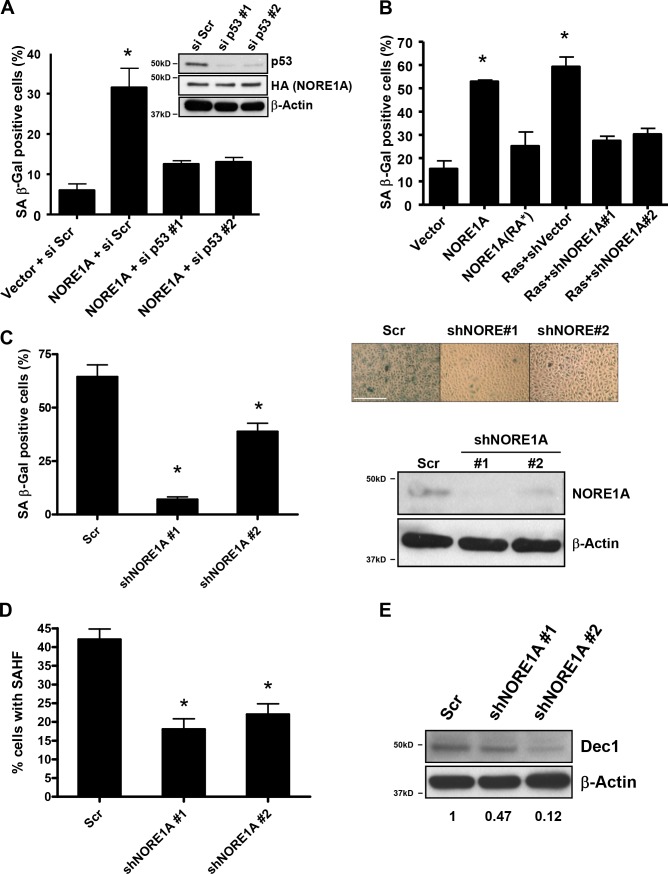Figure 1.
NORE1A is a Ras senescence effector. (A) NORE1A induces p53-dependent senescence in human cells. A549 human lung tumor cells (p53 wild type) were transfected with 1ug of pcDNA-HA-NORE1A and 100 nM of scrambled siRNA or two different p53 siRNAs. Cells were incubated for 72 h before assaying for β-galactosidase activity. p53 and NORE1A levels are shown in the inset. (B) NORE1A is a Ras senescence effector. Primary MEFs were transfected with 1 µg of wild type NORE1A, a Ras binding defective (RA*) mutant of NORE1A, 100 ng of activated H-Ras with vector control shRNA or 100 ng of activated H-Ras with two different shRNAs against murine NORE1A. After 72 h, cells were assayed for β-galactosidase activity. *, P < 0.05 compared with vector transfected cells. (C) NORE1A is essential for senescence in human bronchial epithelial cells. HBEC-3KT cells are a nonvirally immortalized human bronchial epithelial cell line. Stable transduction of shRNA against NORE1A into the cells promoted a dramatic reduction of the basal levels of senescence measured by β-galactosidase activity. (left) Quantification of two separate assays. (right) A representative image of the cells and the relative knockdown of NORE1A protein. Bar, 1,000 µM. (D) The HBEC-3KT+/− NORE cells were scored for senescence-associated heterochromatin foci (SAHF) by analyzing fifty randomly selected cells. The process was repeated twice. *, P < 0.05 compared with cells stably expressing the scrambled shRNA. (E) Western blot analysis of Dec1 expression from the HBEC-3KT cells stably knocked down for NORE1A. The density of the bands was quantitated using ImageJ software and relative Dec1 expression was calculated after normalizing to β-actin expression.

